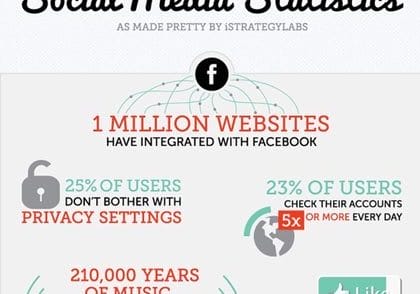Changes to Instagram’s Privacy Policy and Terms of Service were announced Monday and it took just hours for the community to dive into a tailspin. Much of the to-do was about content rights and personal photos being used in advertising. Can you imagine your personal Instagram photo that you thought only your mobile followers would see suddenly showing up to strangers in ads on the Web? Hmmm, sounds familiar, Facebook. That’s a problem.
To look at this clearly we must recognize that the Instagram community suffers from a heightened level of sensitivity since Instagram’s acquisition by Facebook this August. As an Instagram user myself, I feel like a sitting duck waiting for the impending doom. It’s no secret that Facebook is under pressure by its investors to monetize mobile and acquiring Instagram was a strategic move to show Wall Street they got it covered.
Before you decide to jump ship, let’s get the facts straight about the Instagram terms of service change starting with a look at what went down this week.
Instagram Debacle 24-Hour Timeline
Monday December 17: Instagram Announces Changes to Privacy & Terms of Service
Instagram announces changes to their Privacy Policy and Terms of Service, which would go into effect January 16, 2013.
Privacy and Terms of Service Changes on Instagram blog.instagram.com/post/381433465…
— Instagram (@instagr) December 17, 2012
The announcement goes on to say that the changes will help Instagram’s functionality with Facebook. Also included in the announcement are the following statements to help assure users that nothing has really changed:
“Nothing has changed about your photos’ ownership or who can see them.”
“Our updated terms of service help protect you, and prevent spam and abuse as we grow.”
Despite these vague assurances, the Internet community looked at Instagram’s new Privacy Policy and Terms of Service in detail and raised some serious questions. What is not included in the announcement can be found in the second clause under Rights on the Terms of Use page:
“Some or all of the Service may be supported by advertising revenue. To help us deliver interesting paid or sponsored content or promotions, you agree that a business or other entity may pay us to display your username, likeness, photos (along with any associated metadata), and/or actions you take, in connection with paid or sponsored content or promotions, without any compensation to you…”
Monday December 17 – Tuesday December 18: A Firestorm Breaks Out
Over the course of 24 hours, an Instagram community firestorm breaks out on the Internet centering on three core issues:
- Ownership of photos posted to Instagram
- Your Instagram photos being used in advertising without consent
- Permissions and privacy
The community speaks out on Twitter about how they feel, and a movement builds to “kill” your Instagram account. Many individuals did so, turning instead to a plethora of other photo services that offer increasingly added filtering features. After all, if you don’t like the new Terms of Service, Instagram asks that you not use the service:
“These Terms of Use affect your legal rights and obligations. If you do not agree to be bound by all of these Terms of Use, do not access or use the Service.”
Here’s what Twitter had to say about this:
Sadly, @instagram, you have ruined a wonderful service with his greed. Change these ludicrous terms NOW! #instagram news.cnet.com/8301-13578_3-5…
— Edmond Terakopian (@terakopian) December 18, 2012
was thinking about going back to Instagram until they released their new Terms of Service. You are the product-no doubt twitter.com/reedreeder/sta…
— Brian Suda (@briansuda) December 17, 2012
In light of @instagram new terms of service @wired offers: How to Download Your Instagram Photos and Kill Your Account ow.ly/gbmQg
— RN – Radio National (@RadioNational) December 18, 2012
Instagram began attempts to recover Monday per this update from CNET, “Instagram has backed down…Instagram says it will “remove” the language that caused a user revolt over the last day.”
Tuesday December 18: Instagram Backs Down
Co-founder Kevin Systrom responds to the surge of angry Instagrammers in a “Thank you, and we’re listening” letter sharing his concern about the “confusion” that was made with the language of the new terms. He assured users that changes are in the works. At the same time, he shares that Instagram was built as a business and advertising is one way to turn a profit.
“From the start, Instagram was created to become a business. Advertising is one of many ways that Instagram can become a self-sustaining business, but not the only one. Our intention in updating the terms was to communicate that we’d like to experiment with innovative advertising that feels appropriate on Instagram. Instead it was interpreted by many that we were going to sell your photos to others without any compensation. This is not true and it is our mistake that this language is confusing. To be clear: it is not our intention to sell your photos. We are working on updated language in the terms to make sure this is clear.”
I’m not sure who he implies was confused: us or the policy writers.
The Facts About Instagram Terms of Service Changes
As you can see, there is a lot of speculation about what Instagram might do versus what they intend to do. And, no doubt there is a lot of stuff changing behind closed doors at Facebook headquarters. With bloggers and powerful media outlets jumping on the story, rumors can spread faster than the truth. Let’s get the facts straight from Instagram’s most recent statement.
Fact: “To be clear: it is not our intention to sell your photos.”
This is the biggest complaint from people. Although it is not Instagram’s intention, it is a possibility and their initial announcement pretty much spelled out that they were doing this. This sounds like a renege to me. I don’t think Instagram’s most successful asset is your photos; rather it’s YOU as a user. If no one agrees to these terms they will have no photos to sell.
Fact: “Instagram users own their content and Instagram does not claim any ownership rights over your photos.”
This means your photos still belong to you and Instagram respects that. Perhaps they will offer to buy our photos rather than reserve a right to sell them in January.
Fact: “Nothing has changed about the control you have over who can see your photos.”
You still have control over privacy. Not everyone has access to your photos, only those people you choose when adjusting your settings.
Fact: “One of the main reasons these documents don’t take effect immediately, but instead 30 days from now, is that we wanted to make sure you had an opportunity to raise any concerns.”
They were testing us and the test failed. Companies try new things all the time. Sometimes change is good. When a change isn’t going to fly it’s better to know now rather than after it goes into effect in January. Looks like Instagram will need to compromise and make some changes to the new policies.
What You Need to Know About Deleting Your Instagram
Instagram is listening to the community backlash and it might be wise to wait it out. First, consider managing your permissions. But, if you decide to delete (or deactivate) your Instagram account keep in mind there is no way to restore it. Here’s what you should do:
1. Export your photographs so you don’t lose them; Instaport is one service that allows you to download all of your Instagram photos as a .zip file.
2. Delete your account and be sure to leave feedback letting them know why here: https://instagram.com/accounts/remove/request/
3. Make an educated decision about your photo sharing strategy and select a service that’s the right fit for you. Other photo sharing apps to consider are Path, Twitter (recently added filters), Facebook (photo mobile app has filters), and Google+ (watch for filters to come as they’ve recently acquired Snapseed, a photo filter iPhone app). Flickr is also a trustworthy bet. Flickr has had their photo rights figured out for awhile now and supports a respectable licensing and attribution model through Creative Commons 2.0. However, Flickr lacks filters and doesn’t have the best social networking features.
Know Your Rights, Everywhere
I’m going to bet that most of us weren’t familiar with Instagram’s terms before the changes were announced. This is a good wake-up call to get in the know about privacy and terms on any social network we participate in. Have you read Facebook, Twitter, or Pinterest’s policies? Here’s what to look for:
- Do you own the rights to your content?
- Is your name, profile, or content used in advertising?
- Who can see your content?
- Is your content public by default and what are the options for managing privacy and permissions?
- How are third-party apps using your content?
- Is your information shared with third parties?
I hope this helps make sense of it all and you can make an informed decision. Some might say nothing comes for free and eventually every service needs to monetize at some point. I would think that it is not at the expense of their user base because users are a business’s prime asset&emdash;there’d be nothing to monetize without them. I’d love to hear your thoughts.




2 Comments
Instagram may have changed the advertising language in their terms of use, but it doesn’t change the rights they have been granted via the terms of use license. A clear explanation is found in this post: http://dlr-law.com/3/post/2012/12/instagram-and-social-medias-manifest-destiny.html
Hi Dan! Thanks for the clarification this is helpful.